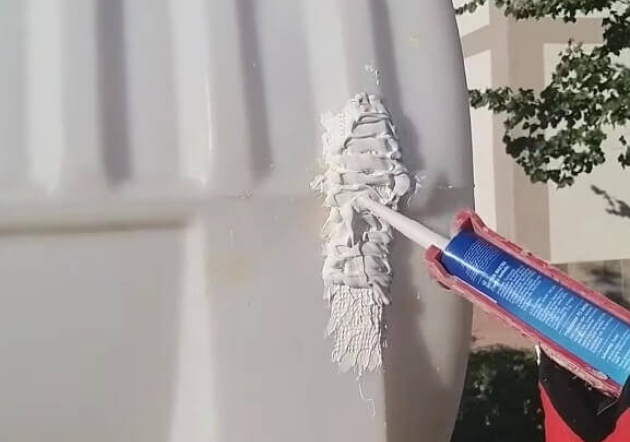
Tanks are now widely utilized across various domains. From residential applications to industrial settings, water tanks have gained immense popularity for storing produced contents. In industries, they safeguard and facilitate the transportation of diverse materials, while at homes, they contribute to reducing utility bills through rainwater harvesting systems.
Polyethylene tanks, regardless of their specific use, serve the general purpose of preserving contents, facilitating transportation if required, and enabling the evacuation and utilization of stored materials when needed. Over time, these vessels may encounter occasional damages, often taking the form of cracks due to accidental falls or holes on the tank surface from external factors.
Which Water Tank is the Most Durable?
Among all types of water tanks, the ones made of stainless-steel fall into the category of the most robust tanks. Stainless steel possesses both a strong structure and a very high operating temperature capacity. Looking in this direction, the operating temperature, which is set up to 80 degrees, is close to the boiling point of water. This allows you to store hot contents directly in stainless steel tanks.
All tanks share similar features, and each type has its own advantages in terms of raw materials and designs. One of the significant advantages is that all tanks can be produced in any desired color. This enables easy categorization of different contents based on tank colors. Furthermore, all tanks are UV stabilized, preventing harmful rays from entering and ensuring a more sterile preservation of the stored content.
When considering tanks in general, they are typically made of polyethylene, polyester, or stainless steel. Examining the tanks made of stainless steel among these three materials, we observe that the main material obtained by combining chromium and nickel is used in their production, using argon welding in water tank designs. This production method allows for on-site assembly advantages. Stainless steel water tanks are highly resistant to rust and corrosion, and they are easy to clean and can be produced in large capacities ranging from 500 liters to 100,000 liters.
Polyester tanks are favored for their chemical resistance. They are produced using isophthalic and epoxy-based vinyl ester resin when chemical resistance is required. Essentially, they are made by combining polyester resin with glass fiber. Thanks to their manufacturing process, they offer on-site assembly options like stainless steel tanks. Polyester tanks are easier to transport and have a working temperature of 60 degrees.
Polyethylene tanks are popular for their affordability. The main reason for their cost-effectiveness lies in their production method, where polyethylene is molded into one piece using specially designed molds for tank designs. This efficient production process results in quick manufacturing. With their smooth surface, these tanks are easy to clean, and regular cleaning prevents moss formation inside the tank. Operating temperature is around 50 degrees, and their size range varies from 50 liters to 25,000 liters. They are suitable for storing food, and to ensure complete food safety, tank covers are made of polyethylene, while brass sleeves are used in the sleeve part.
In this article, we have discussed the extent of tank damage and when it's appropriate to consider replacement. Additionally, we briefly highlighted the features of different tanks and identified the most durable ones. If you desire a robust and long-lasting water tank, feel free to reach out to our customer representatives. If there is damage to the surface of your tank, you can contact the manufacturer's production facilities for repair. However, if your tank has undergone multiple repairs, the surface might begin to deteriorate, signaling the need for replacement. Polyethylene tanks are repaired by bonding the main material obtained from polyethylene to the damaged area, while preserving the original tank design as much as possible.


 EN
EN
 DE
DE
 FR
FR
 IT
IT
 ES
ES
 PT
PT
 RU
RU
 AR
AR
 BG
BG
 SR
SR
 GR
GR
 SQ
SQ
 RO
RO
 PL
PL
 HU
HU
 CZ
CZ
 HR
HR
 AZ
AZ
 GE
GE
 AM
AM
 IL
IL